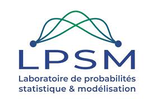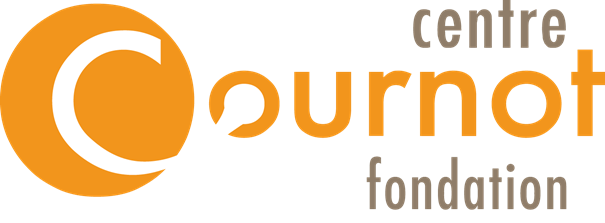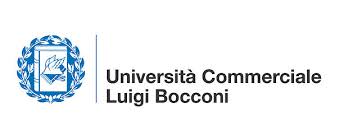Mathematical Communities in the Reconstruction after the Great War (1918-1928)
Les communautés mathématiques dans la reconstruction de l’après-guerre (1918-1928)
12 – 16 November 2018
|
Scientific Committee
Comité scientifique Joaõ Caramalho Domingues (Universidad do Minho) |
Organizing Committee
Comité d’organisation Thomas Archibald (Simon Fraser University) |
|
November 2018 commemorates the centennial of the end of the Great War. The aim of the conference is to study the deep changes, but also the continuities, that took place in mathematical communities in the aftermath of the war.
In 1918, new countries were created, such as Czechoslovakia, Poland and Yugoslavia. The borders of several others were modified. Territories were annexed notably to France (Alsace and Lorraine), Italy (Trieste and other northeastern territories) and Romania (Transylvania), while some countries, such as Bulgaria and Hungary, lost entire regions. These territorial changes bear witness to the massive and varied upheavals to which European societies were confronted in the aftermath of the Great War. The reconfiguration of political Europe was accompanied by new alliances and a redistribution of trade – commercial, intellectual, artistic, military, and so on – which largely shaped international life during the interwar period. These changes also had an enormous impact on scientific life, not only in practice, but also in its organization and communication strategies. The mathematical sciences, which from the late 19th century to the 1920s experienced a deep disciplinary evolution, were thus facing a double movement, internal and external, which led to a sustainable restructuring of research and teaching. Concomitantly, the areas of topology, functional analysis, logic and probability experienced exceptional development. This was accompanied by an explosion of new international associations of mathematicians with the founding, in 1918, of the International Mathematical Union and the International Research Council. After the war, international organizations had a decisive influence on mathematics, both in helping to overcome the legacy of war rivalries (for example, the difficult relations between French and German mathematicians) and in allowing for the emergence of new opportunities (increased travel for scientists and the implementation of major institutional projects all over Europe were both made possible by funding, for example, by the Rockefeller Foundation). The conference is organized around three main themes: Disciplines, Territories and International Organizations, which overlap in some cases. Functional analysis in 1920s Poland, for example, naturally falls under the category of “Disciplines”, as it was a new mathematical topic at the time. It also fits, however, under the heading of “Territories”, as Poland was declared an independent state after the war. The aim of the presentation would be to compare the dynamics of the old and new territories and the old and new players through exploring international mathematical conferences, the circulation of newspapers and books between European countries, and the travels of mathematicians (especially young mathematicians) from one country to another. One original feature of the conference is its study of mathematics in places that are still too little investigated by historians of mathematics, such as Central and Eastern Europe. For a more in-depth look at the evolution of mathematical ideas during the period, we have scheduled two half days devoted to more technical disciplinary aspects. Given their rapid expansion in the 1920s, we have chosen topology and the mathematics of randomness as the topics of these half-day sessions. Finally, to complete the picture, we have invited the Cournot Centre to organize a half-day session devoted to the transformations that took place in mathematical economics during the interwar period. The conference will thus emphasize how the period that opened in 1918, extending from the Armistice of 11 November 1918 to the International Congress of Mathematicians held in Bologna in 1928 – marking the first time that mathematicians from all countries could once again participate in an international conference – was significant for mathematical life between the two world wars. |
Au lendemain de la Première Guerre mondiale, l’Europe vit des changements géopolitiques profonds. De nouveaux pays sont créés tels que la Tchécoslovaquie, la Pologne ou la Yougoslavie. Les frontières de plusieurs autres sont bousculées comme dans les cas de la France, de l’Italie ou de la Roumanie avec l’annexion de nouvelles régions – l’Alsace et Lorraine pour la France, Trieste et d’autres territoires du nord-est pour l’Italie, Transylvanie dans le cas de la Roumanie. Inversement, du côté des vaincus, en particulier de la Bulgarie et surtout de la Hongrie avec la perte de régions entières.
Ces modifications territoriales illustrent les immenses bouleversements de toutes sortes auxquels les sociétés européennes furent confrontées pour gérer les suites de la Grande Guerre. Les reconfigurations de l’Europe politique s’accompagnèrent d’une redistribution des alliances et des échanges (commerciaux, intellectuels, artistiques, militaires, etc.) qui dessina en grande partie la vie internationale pendant l’entre-deux-guerres. Ces transformations eurent aussi des conséquences énormes sur la vie scientifique : dans ses pratiques, mais aussi dans ses stratégies de communication et d’organisation. La conférence s’articulera autour des trois blocs : disciplines, territoires, Organisations internationales, avec évidemment des superpositions entre les blocs. Par exemple l’analyse fonctionnelle dans la Pologne des années 1920 rentre de manière naturelle dans le bloc « disciplines », l’analyse fonctionnelle étant alors un sujet mathématique nouveau, aussi bien que dans le bloc « territoires », vu que la Pologne s’est constituée en état indépendant au lendemain de la guerre. Le but des exposés sera de questionner la dynamique entre les “nouveaux » et les “anciens » territoires, les “nouveaux » et les “anciens » acteurs en explorant aussi les colloques mathématiques internationaux, la circulation des journaux et des livres entre pays européens et les voyages des mathématiciens (surtout des jeunes mathématiciens) d’un pays à un autre. L’originalité de cette conférence concerne notamment l’étude des mathématiques dans des lieux qui sont encore aujourd’hui trop peu examinés par les historiens des mathématiques, comme ceux de l’Europe centrale et de l’est. Afin de permettre une participation très large en terme de provenance des participants, la langue commune choisie pour la conférence sera l’anglais. Pour mieux faire percevoir l’évolution des idées mathématiques dans la période, deux demi-journées seront spécifiquement consacrées à des aspects disciplinaires plus techniques. A titre d’exemple, nous avons choisi deux domaines très différents qui ont l’un et l’autre connu dans les années 1920 une évolution fulgurante : la topologie et le calcul des probabilités. Enfin, en collaboration avec le Centre Cournot (http://www.centre-cournot.org ), une demie-journée sera consacrée aux transformations de l’économie mathématique dans cette période décisive où le règlement des énormes défis économiques de la reconstruction a conduit à d’importants travaux. La période qui s’ouvrit en 1918 fut donc décisive dans l’histoire des mathématiques de toutes sortes. L’intervalle de temps sur lequel nous désirons nous concentrer s’étend de l’Armistice du 11 novembre 1918 au Congrès International des Mathématiciens qui eut lieu à Bologne en 1928, et qui fut le premier où les mathématiciens des pays de l’Entente, ceux des anciens Empires Centraux purent de nouveau participer les uns au côté des autres. Ce fut aussi le dernier avant longtemps où les mathématiciens soviétiques participèrent en nombre. Le choix du mois de novembre 2018, commémorant les cent ans de la fin de la Grande Guerre, nous semble donc symboliquement particulièrement bienvenu et la conférence prend place dans le cadre des manifestations prévues en 2018 sous l’égide de la Mission du Centenaire. |
Thomas Archibald (Simon Fraser University) Research Values in Analysis : the work of Otton Nikodym
Michel Armatte (Centre Alexandre Koyré, Paris) Economic Cycles: From Descriptive Statistics to Formalization – VIDEO 1 – VIDEO 2 –
Frédéric Brechenmacher (Ecole Polytechnique) The matrix of mathematical standardization
João Caramalho Domingues (Universidade do Minho) Mathematics in post-WWI Portugal: attempts at internationalization
Rémi Catellier (Université de Nice-Sophia Antipolis) The dawn of the Wiener measure
Matthias Cléry (Ghdso – Université Paris-Sud) Borel and the foundation of the Institut Henri Poincaré
Guillermo Curbera Costello (Universidad de Sevilla) The first decade of the International Mathematical Union
Antonietta Demuro (Lille) The Institut de Mécanique des Fluides in Lille and the status of hydrodynamics in France in the inter-war period
Dikran Dikranjan (University of Udine) The Polish School of topology in 1918-1928
Helena Durnova (Masaryk University, Brno) Vaclov Hlavati and mathematics in Prag
Alicia Filipiak (Orange Labs Paris) Bela Kerekjarto’s journey’s over Europe in the 1920
Hans Fischer (Katholische Universität Eichstätt-Ingolstadt) Richard von Mises’s „Grundlagen der Wahrscheinlichkeits- rechnung“ (1919)
Alexandre Gaudillière (CNRS I2M Marseille) On Limit theorems of probability theory in the 1920s
Livia Giacardi (Università degli Studi di Torino), Rossana Tazzioli (Université de Lille) The foundation of the Unione Matematica Italiana (1918-1928)
Hélène Gispert (Ghdso – Université Paris-Sud) The journal L’Education Mathématique and its internationalist ambitions in the 1920s
Katalin Gosztonyi (Université de Szeged, Budapest) Leopold Fejér and the emergence of the Hungarian Mathematical Culture
Angelo Guerraggio ( Università Bocconi,iMilan) Fascism and the Paretian heritage in Italy
Ulf Hashagen (LMU München) Two East European Mathematicians in Berlin and Munich in the 1920s: Salomon Bochner and Johann von Neumann
Miroslav Hušek (Charles University,Praga) Development of topology in 1918-1928, mainly in Russia
Frédéric Jaëck (Laboratoires SPHère (Paris Diderot) et DMA (ENS)) A look at Banach’s work through his publications in the two journals: Fundamenta Mathematicae and Studia Mathematica
Alexander Karp (Columbia University) In the Struggle for Red Integrals (On Several Figures in Post-Revolutionary Russian Mathematics Education)
Irina Konovalova-Peaucelle (CNRS, Paris School of Economics) Was the Russian Theory of Cycles a Mathematical Theory? – VIDEO –
Jan Kotůlek (Technical University of Ostrava) Emil Schoenbaum and the reconstruction of Social Insurance in Czechoslovakia after the Great War
Laurent Mazliak (Université Pierre et Marie Curie) Kyrill Popov and ballistics
Jan van Mill (University of Amsterdam) On the history of dimension theory
Roman Murawski (Adam Mickiewicz University, Poznan) Mathematical foundations and logic in reborn Poland
José-Miguel Pacheco Castelao (Universidad de Las Palmas Gran Canaria) Spanish mathematics in relation with other European countries after the Great War
Giovanni Paoloni (Università « La Sapienza », Roma) Vito Volterra’s commitment in the scientific politics of the 1920s
Thomas Perfettini (Université Paris 6) Mathematics in the Russian emigration in Paris in the 1920s
Pierre-Charles Pradier (Université Paris I) Were the Foundations of Measurement without Theory laid in the 1920s? – VIDEO –
Raphaël Prunier (Université Pierre et Marie Curie) The circulation of ideas in 1920’s mathematical statistics
Patricia Reynaud-Bouret (Université de Nice Sophia-Antipolis) Small stories around statistical testing
Tilman Sauer (University Mainz) Einstein, relativity and its influence on mathematics
Martina Schiavon (Université de Lorraine) Revaluation of topography after WW1 and the creation of the Geodetic Union
Reinhard Sigmund-Schultze (University of A
gder) Richard von Mises’ Institute for applied mathematics in Berlin, his journal ZAMM and the society GAMM as new developments in German mathematics from about 1920
Rossana Tazzioli (Université de Lille 1) The first years of the Unione Matematica Italiana and its Bollettino (1922- 1928)
Laura Turner (Monmouth University) « A glorious opportunity to benefit mankind »: Mathematical projects and perspectives in postwar America
Lukas Verburgt (Utrecht University) A Bolshevik menace : Brouwer’s reception from Cambridge to Moscow in the 1920s











